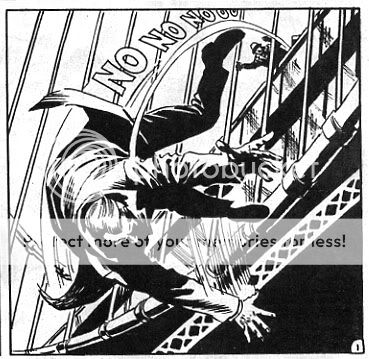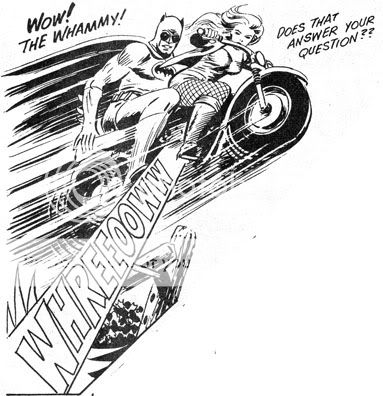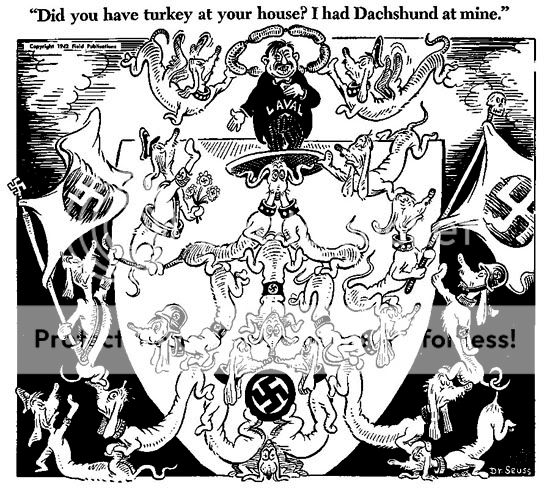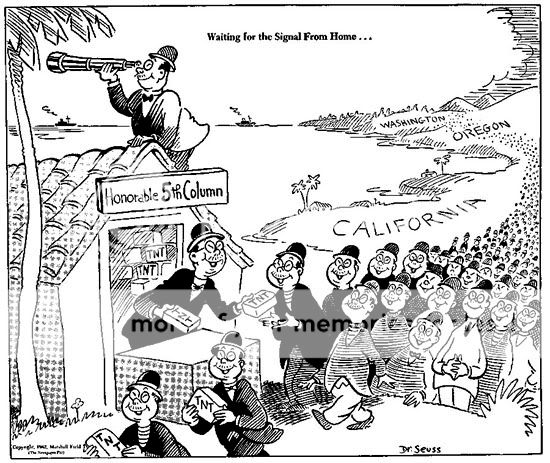Yes, it’s the continuation of our exploitative, unmotivated cross-over event. At the end, Flash will be anally raped with Sue Dibny’s elongated corpse and then time will jump forward three years, back four, and marinate in fermented nerd juice for six, and yet, strangely, nobody will care. Till, then…start at the beginning why don’t you?
The Brave & The Bold # 91
Written by Bob “Hammering” Haney
Art by Nick “Fucking” Cardy
Cover by Nick ” Insert Hard-Boiled Metaphor for Intercourse Here ” Cardy
Published by Chip Kidd, 1970
So Tucker has this thing where he’s all super professional and posts credits and covers and stuff. I am trying to keep up, but probably can’t. [And, indeed, I haven’t figured out the covers thing. Maybe next time.]
I wasn’t going to bother with the clever nicknames for all the contributors, but I couldn’t resist repeating Tucker’s “Bob ‘Hammering’ Haney gag. Mainly because as I was reading these I kept imagining Haney sitting there, way back in the day, when they still made the computers out of wood and cardboard, staring at his stapled together Commodore 64 screen, typing hunt-and-peck style with one hand, and using the other forepaw to bash himself repeatedly in the head with a giant ball-peen hammer.
You read through those first few issues that Tucker reviewed and you can see it happening.
“Here we go….Gotham is being invaded by an old sect of…um…”
WHACK!
“Mormons! That’s it…and they want reparations, but then…uh,”
WHACK!
“GAH! Wait, there are ghost Mormons too, and the Phantom Stranger…and…”
CRACK!
“Oh, lord, the pain! Flashing lights…yes, it’s Doctor Thirteen! And, uh…Dick Grayson is a… boy warlock! And the head Mormon is actually an amnesiac criminal who has to come to his senses if the town is to be saved….”
WHAM!
“Where wuz I…what the…Hellerites?…Bat-Arrest? (slumps to ground, lights dim, exeunt omnes.)
Haney had that hammer swinging good and hard for this Bat-team-up with Black Canary too, let me tell you. Right from the cover, which features a giant billboard declaring “You Are Now Entering Gotham: Welcome to Fun City.” So…when exactly did Gotham become “Fun City”? Is it a Joker prank? An alternate earth? A new crossover fiat? Nah…it’s just Bob Haney staggering around and drooling after repeated blows to the head. That’s also why everyone in the comic talks in this bizarre alliterative aphasiac hipster patois
“Good Blazes! That bundle was booby-trapped — that rooftop buzzard was “fingering” me!”
“Black Canary! You hurled that bomb-bundle away with your sonic powers! But how’d you know?”
“Clever girl! I owe you one Bat-life!”
When Haney teams with Jim Aparo, the cheekily doddering dialogue makes a kind of sense. Aparo, at least, has an analogous sense of fun; he loves drawing bizarre, visually uninterpretable perspectives and kooky power displays — you can feel him and Haney riffing off each other, enjoying the Bat-bonkosity of it all.
Nick Cardy, the artist here, is a different stripe of preposterousness. Not that he’s a bad artist. Or a mediocre artist. Okay, let me just come out and say it — Nick Cardy is a fucking great noir artist. I’d never heard of him before, but I was totally sold from the first page. Some poor schmo gets tossed off a bridge, and it’s all shadows and the bridge’s support structures forming an ominous pattern and the guy’s screams curving up with the swooping motion lines that trace his descent — “NO, NO, NO, NO.” I love that.
Shortly thereafter you’re into the smoke-filled den where you can actually see the smoke hovering around…then there’s a great shot from up on the bridge down to a barge with Batman and Gordon in silhouette far below…. None of it’s super-flashy, but it’s visceral and moody and elegant. Cardy’s Batman is a little stocky, a little brutal; he looks built to hurt people. The pulp tropes are done with panache and conviction; the requisite shot with a pair of crossed legs in the foreground and the guy standing in the back is, for example, handled marvelously.
Those legs, incidentally, belong to Black Canary who, in Cardy’s rendering, is absolutely dazzlingly hot. Indeed, this may be the one and only time that she actually looks better in her civilian identity than in uniform. You can have the fishnet tights, heels, and breasts straining to leap out of the top of a brassiere. Give me the short, tight, patterned miniskirt and that clinging sweater with the two top buttons undone, or the number below…
When Canary in costume tells Batman she has to go change into something more feminine, it’s not quite as ridiculous as it sounds.
Where was I? Oh right….
So Cardy trots out the pulp tropes; action sequences loaded with physicality, light and shadow effects, hourglass figures straining against fabric. Haney tries to live up to it, he really does; he throws in an ambiguously moral private dick; he’s got betrayal, he’s got complicated underworld sheanigans…and yet it all just keeps disintegrating, doesn’t it? Dinah in civilian clothes looks the part of the innocent secretary…but then she goes into a mental fugue and starts filling her thought-bubble with unintelligible continuity burble about Earth One and Earth Two. Batman is talking earnestly about how he suspects Canary’s lover of foul play…and then he drops a reference to how his “Bat-sense” is twitching, which is a conversation killer if ever I’ve heard one. Canary accuses Batman of trying to get between her and her guy because he’s jealous, and she slaps him in full-on pulp mode…and then Batman admits in a single thought-bubble that he does like Black Canary — and then the whole sexual jealousy theme just disappears, like an effervescent dream, or a passing raunchy senior moment. Best of all, though, is when Haney demonstrates the evil villain’s cleverness by having him dress up one of his henchmen as Batman, and then having the henchman…impersonate Batman, you think? Cause havoc in the Caped Crusader’s name? Nah. The becowled baddy just sits in on meetings and role-plays the real Batman so that the crooks can know Batman’s “slant on things, like he was here himself.” Yep, the criminal mastermind seems to have read one too many books on management theory. (That’s okay, though, because Batman and the Black Canary are every, every bit as stupid. In fact, they’re stupider. Batman takes on the disguised evildoer as his partner, and Canary takes the same evil-doer on as her lover. Whoops. (Also, Haney has Canary say, “I’m a woman first — and a super-heroine second!” Eat your heart out, Roy Lichtenstein.))
So you’ve got great intense noir visuals, but Haney is still Haney. The effect is vertiginous; it’s as if you were watching Out of the Past and Robert Mitchum suddenly strolled from the shadows strumming a ukulele with his underwear draped over his head. There are times when the whole thing reads like parody, times when it reads like a disaster…and times when it becomes a sort of transcendent dada epiphany. Your attention please, as I present: The High Point of Comics As We Know It!
There’s really nothing else to say after that.
The Brave & The Bold # 93
Written by Bob “Cor’ Blimey”Haney
Art and cover by Nick “It’s a Fair Cop” Cardy
Published by the Masons, 1970
So this is all about Jack-the-Ripper and holes in the space-time continuum. In other words, it’s just like “From Hell,” except that, instead of the Ripper murders, the founding moment of modernity is the instant some elderly goober chomping on a pipe first called our hero “Bat-chap.” The whole bloody, tragic 20th century — the World Wars, the Holocaust, Eric Fucking Clapton, acid-washed jeans — originated in that one awful instant, reverberating backwards and forwards through time.
This issue is also notable as the moment when Bob Haney put his foot down. “I am not teaming up Batman with another stupid DCU second stringer! No Adam Stranger! No Phantom Strangest! I’m done, finished, kaput!” he shouted. “And also, I want to write endearing British accents!” Then he leaned over and started foaming. So editorial said, “S-S-S-sure Bob. Whatever you want, Bob. English accents…you got it,” and Haney tripped off happily, chortling to himself “‘Cheerio, ducks!’ heh heh ‘It’s your show, old chap,’ giggle, snort, ‘Bat-chap’ HAW!”
So this issue introduces…The Bat Squad! What is the Bat Squad, you ask? Would you believe…a team of super-cricketers?
No? How about three boring British civilians? Margot — script girl! Major Dabney — ex-Scotland yard detective! Mick Murdock — guitar player! Separately, they don’t look like much, but together they can completely fill a panel with clunky expository dialog. Also, Margot knows karate, and Murdock was a pickpocket, and Dabney knows a lot about beetles. That qualifies them as crimefighters in Batman’s book, and he cheerfully sends them into danger, armed only with walkie-talkies and, in Margot’s case, a wicked mini-skirt. Perhaps inspired by said skirt, Batman occasionally encourages her by exclaiming, “Good girl!”
Nick Cardy draws a mean mad strangler, but otherwise the art doesn’t seem as motivated on this outing — possibly because Cardy found it hard to concentrate while shaking his head in disbelief In any case, Haney staggers about with his usual aplomb, thunking into several of his favorite theme — like, for instance, convenient bouts of amnesia and deadly gaping plot holes.
In other high points: Batman refers to his friend “old Archimedes.” Yes, he’s talking about the Greek thinker; specifically about buoyancy and how it can help you lift an unexploded Nazi bomb, which proves that the date must be later than 1945 even if the fetching actress unaccountably believes she’s actually the strangler’s first victim from decades before and you’ve found a newspaper from 1906. Isn’t that all educational?
No. No it isn’t. Bless Bob Haney’s heart. If he was your secondary school teacher, he’d start off trying to teach you the principles of physics and end up with Batman paying a bunch of thugs to attack Archimedes to convince the Greek heavyweight that he still has that old pizazz. Then, inspired, he’ll build a better Bat-lever just like he did when he was young and peppy. And Archimedes would talk in a cockney accent and would turn out not to be Archimedes at all, but Archimedes’ great-grandson, who thinks he’s his ancestor, but actually turns out to be an avenging bearded Mormon. Wearing a mini-skirt and a Sherlock Holmes cap and…nothing else!
So what I want to know is…did the Bat Squad ever come back? Google doesn’t seem to know…any continuity experts out there remember? Surely, surely, they must have vanished into oblivion? Right? I said, right?
The Brave & The Bold # 93
Written by Denny “Zimmerman” O’Neil
Art and cover by Neal “Eddie Van” Adams
Published by DC Comics, 1970
You turn that page and…wham! It’s Neal Adams! I’m not even sure I necessarily like his art better than Nick Cardy’s, but it’s completely different…like the CD changer switched from Muddy Waters to Led Zeppelin. I think Cardy’s actually better at conveying motion, but Adams’ poses are much more dramatic, and his faces are beautiful. But the thing that hits you and makes you go, uh! is the design. He’s just got a much more expansive approach to layout; varying panel size and shape and even the spaces between panels so the whole page pops out at you.
(Just as a side note, it’s kind of hard to believe that there was a time when you could actually look at some random mainstream artist you’d never heard of and say, “You know, this guy is not clearly in every way worse than Neal Adams.”)
Anyway, Neal Adams has apparently seen the drooling, gibbering husks of artists who try to render Bob Haney’s scripts into some sort of coherent dramatic form, and he’s having none of it. Instead, he’s teamed with Denny O’Neill.
I think this is actually the only issue in this volume written by someone other than Bob Haney, so it was an interesting way to test my growing enthusiasm for Haney’s writing, particularly in light of what Tucker said in his his review of the first three issues said
Look, you either ride this bull because you fucking like this bull or you don’t. It’s a metaphor! It’s an allegory! It’s all rife with the meaning of the Heroic Saga, as written by Joseph Campbell “The Dumbest Literary Philosopher In The Bargain Bin Of Literary Philosophy” and popularized by George Lucas, the patron saint of “If something has a double meaning, it’s clearly, oh so clearly, better then Tolstoy.” No. Don’t get your pretension in here. Take it and shove it up your ass, and take Mallard Fillmore with you: those are your comics. Not for us, for us, it’s Bob Fucking Haney, and Haney understands you, 1970. Haney is going to teach you that when it wears spandex, and when it punches shit, that it is to scream like a housewife, worry about Dick Grayson, and entertain. This is entertainment, it’s pure. If Stan Lee knew that a bunch of people with way more time on their hands then they had sense were going to write terrible books about how Spider-man defined a culture, he would’ve jumped out a window and shot up the floors he passed on the way down. And we would be a better race of knuckle-draggers for it.
I don’t exactly disagree with that (especially the stuff about Joseph Campbell — whose totem animal (little known fact, here) is the Boomer Turd.) Still…I don’t think the whole appeal, or maybe even the primary appeal, of Bob Haney is lack of pretense. In the first place, he does have certain pretensions — there’s an awful lot of self-actualization gibberish, for example. And in the second…I don’t know that what’s great about Haney is just his desire to entertain. I mean, lots of people just want to entertain.
Take, for example, Denny O’Neill. I like Denny O’Neill; I still think his run on the Question was pretty terrific. And it’s certainly true that O’Neill has various pretentious instincts…but he’s got them well-muzzled in this outing. He’s telling a straight pulp adventure story with some horror twinges. And you can see right away why O’Neill is generally, I believe, thought of as a good comics writer, and Haney isn’t thought of at all. In terms of actual, textbook, by-the-numbers storytelling, O’Neill is clearly superior. He has a set-up — Batman’s exhausted and needs a vacation — and follows it through all the way from beginning to end. You don’t, for instance, find out on page 6 that Batman is exhausted, and then have him well-rested on page 8, or getting amnesia and forgetting he’s exhausted and so being able to overcome hordes of Mormons on page 11. He’s exhausted at the beginning, he’s exhausted in the middle, he’s exhausted at the end. When there are unexplained blips (Batman’s costume keeps appearing and disappearing from his suitcase) they are clearly marked as unexplained — Batman wonders about them just as the reader would. Foreshadowing is used in a way that makes sense, or at least suggests that O’Neill actually knows what the end of the story is supposed to be before he gets there. He’s even able to use a consistent framing device; Cain from House of Mystery narrates throughout, in a consistent semi-ironic voice. The rest of the dialog sounds like O’Neill might have, at some point in his past, actually heard real people conversing. And so on.
So on some scale, O’Neill’s clearly a better writer. But you know what? It’s boring. And more than boring. O’Neill’s story hinges on a child in danger, and it feels cheap and stupid. Cain’s narration is irritatingly unctuous; it’s not an interesting enough device to justify the extent to which the character seems pleased with himself. There is one bizarre Haney-like moment when Batman is poisoned and the villain offers him a choice of antidotes for no good reason. But because it’s the only such moment, it sticks out as deliberate padding: a bug rather than a feature.
What I’m saying is that, the problem isn’t that O’Neill is more pretentious; the problem is that…for this kind of short super-hero story, that comes out of nowhere and goes to nowhere…Haney is, despite initial appearances, a much superior writer. The stuff O’Neill is worried about —realistic dialog, consistent plot, consistent characterization — don’t matter nearly as much as the stuff Haney cares about —certain kinds of language games, something (anything!) unexpected happening every two or three panels, melodramatic effusions.
All of which is to say, I want to avoid going down a road where you end up at some sort of statement like “Haney is so bad he’s good!” (I don’t think Tucker said or thinks this at all; it just seems like a place somebody might get to from reading parts of his post.) It’s easy to laugh at Haney’s dialog — but does that mean that Haney isn’t laughing too? Those British accents; they’re not right, but they’re enjoyable, and I bet Haney enjoyed the hell out of writing them. His penchant for employing amnesia as a plot device — it’s not an accident or a blip or a mistake. It’s thematic; it’s how he sees stories: as chains of events where the actual links are always on the verge of fading away, leaving characters, readers, and creators delightfully rudderless.
Not that everything Haney does is equally great, or that he can’t make bad choices (Tucker almost redeemed that Wildcat story for me with the Rocky comparison…but, alas, not quite.) But he’s not just a stumbling clod who’s enjoyable because you get to make fun of him. He’s got a vision of how super-hero comics can work, and it’s unique and exhilarating and often brilliant. Denny O’Neill’s effort here, by contrast, seems very pedestrian.
Late Breaking Update: Tucker’s next installment is here





